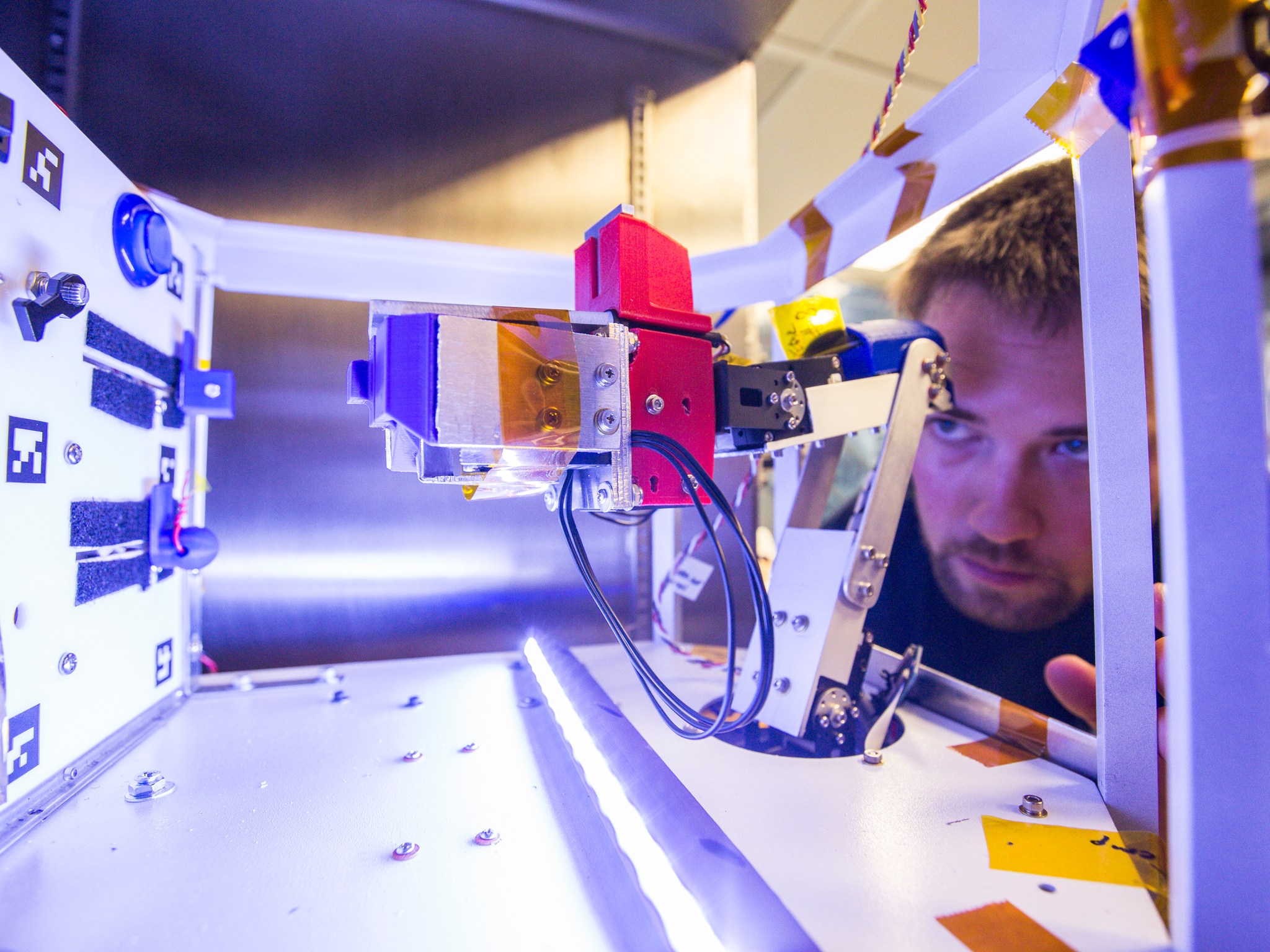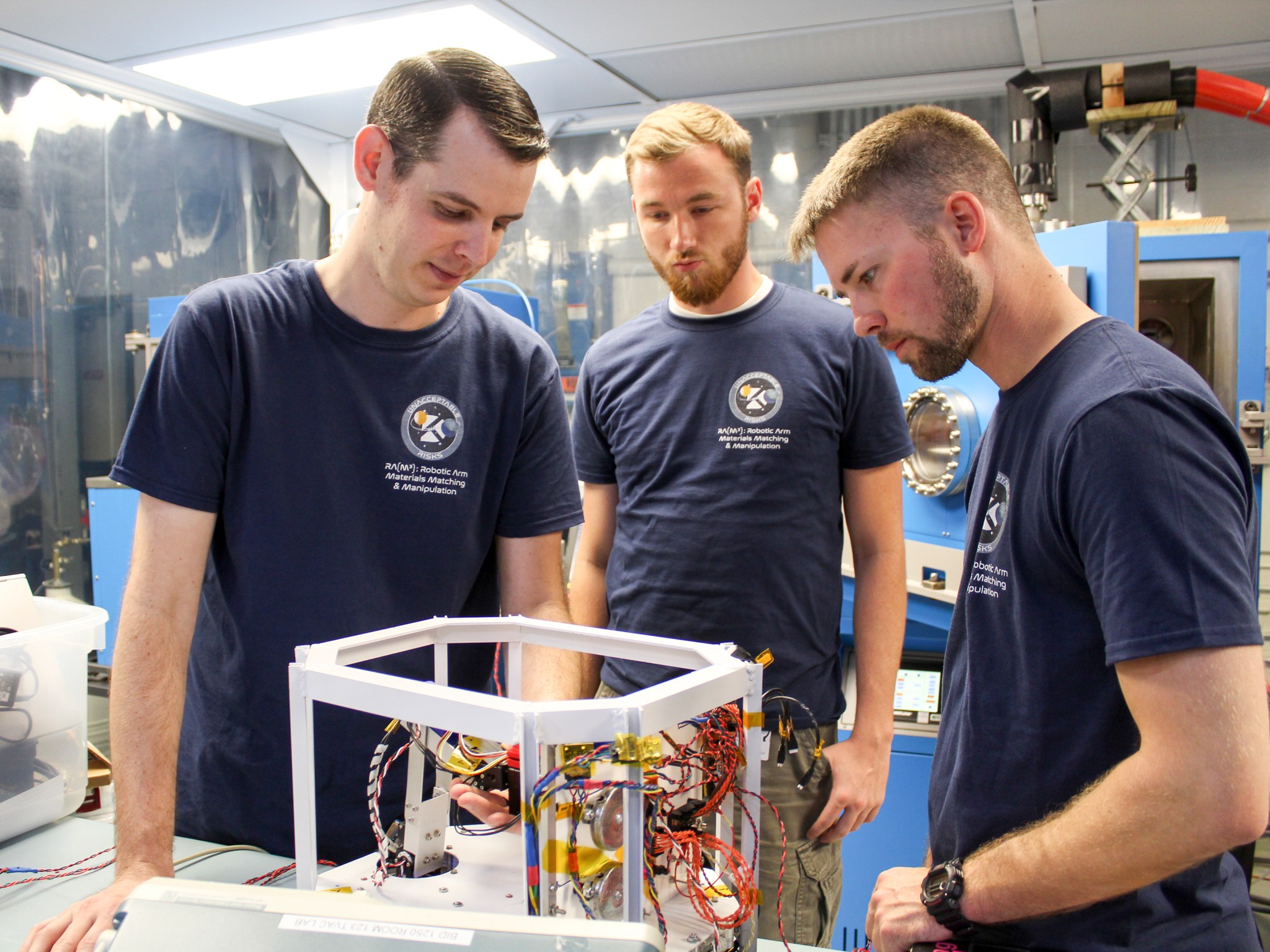A group of North Carolina college students preparing a payload for a high-altitude balloon ride visited NASA’s Langley Research Center in Hampton, Virginia, recently and got a little taste of what it will be like for that payload to go right up to the outer edge of Earth’s atmosphere.
The students are part of Unacceptable Risks, a team from Durham Technical Community College in Durham, North Carolina, that’s readying for the 2018 High Altitude Student Platform (HASP), a program that allows teams to mount payloads on high-altitude balloons.
Their payload? It’s called Robotic Arm Manipulation and Materials Matching (RAM3) and can complete basic kinetic tasks such as turning knobs, pushing buttons, and sealing/unsealing a Velcro strip. Alongside the designing, building, and wiring of RAM3, Unacceptable Risks also had to make it operate autonomously.
They were at Langley to put RAM3 in a thermal vacuum chamber and see how it would handle the extreme temperatures of a near-space balloon flight at -55 C and 55 C — or -67 F and 131 F, respectively.
Team members James Cowell, Seth Close and Spencer Lee made the trip to Langley along with faculty lead Julie Hoover. Following their visit, the team expressed gratitude in a post on their blog: “We are so thankful to have this opportunity to test because it means that we are in a much better position to go into integration with confidence. […] Testing is challenging at a small community college where we don’t have access to facilities and we can’t afford to pay to have our payloads tested.”
The team got the idea for its project following a 2017 visit to NASA’s Goddard Space Flight Center in Greenbelt, Maryland. There, they discovered aging NASA satellites weren’t designed to be fixed, just replaced. That’s where the idea for RAM3 was born.
For the past eight months, Unacceptable Risks has been taking inspiration from NASA’s Satellite Servicing Projects Division (SSPD), which is developing in-orbit robotic service arms. The big difference between RAM3 and SSPD’s robotic-arm projects is that while the SSPD arms are controlled by people, RAM3 functions autonomously.
The next step for the team is to test the RAM3 on a balloon flight at the Columbia Scientific Balloon Facility in Palestine, Texas, on Labor Day — Sept. 3.
“The Systems Integration and Test Branch is happy to help student groups whenever we are able,” said Mark Thornblom, Langley’s Systems Integration and Test Branch head. “With respect to RAM3, their test needs happened to coincide with some capability upgrades that we had already planned for extending the low- and high-end temperature range of one of our small vacuum chambers. So for us it just made sense to have them come in with their hardware and operate in conjunction with our testing. It was a win-win for both groups.”
Florentina Sergiou
NASA Langley Research Center
































